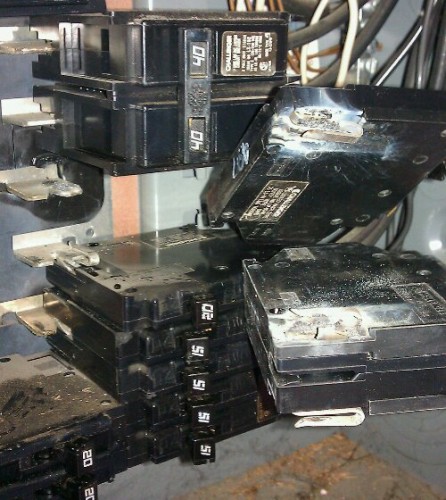History of the Challenger Panel
In 1973, GTE-Sylvania (same owners of Zinsco) introduced their own panel and breaker design. They named their product “Challenger”. Between the 1980’s to the 1990’s Challenger panels were installed in hundreds of thousands of homes. Because the Challenger panel was very similar in design to Zinsco’s, it caused some strong opinions from professionals. The company at some point could have re-labeled the Zinsco product to pass it off as Challenger.
Over Challenger’s short time in production the company was sold four times. The final ownership was by Eaton Corporation before the Challenger’s discontinuation. Challenger panels are easily identified by the label on the latch on the outside of the panel door. Likewise, if it is still there, the chart on the inside of the door (see picture) shows the label.
Problems with Challenger Panels
Challenger panels posed safety hazards very similar to that of Zinsco. The biggest concern for Challengers were their issue with overheating. In turn, that can cause many other issues, like fusing and/or melting, corrosion, or actual fires. Occasionally they don’t trip at all, or just may take too long to trip. Stab-lok panels have had much more extensive testing than these. But either way, for peace of mind, Challenger panels should be replaced.
Challenged?
If your home – or soon to be home – has a Challenger panel, and you have questions regarding how to address the issue, please do not hesitate to give us a call today. One of our representatives will give you a free consultation over the phone. If needed, we can schedule an appointment for an evaluation. Changing out this panel is a top priority when it comes to your home’s safety.
For more information of Challenger panels, click here.
Disclaimer:
We take great care to provide the most accurate information on this page. However, all content is for informational purposes ONLY and should be considered as General Knowledge or even as entertainment. It should not be relied on, as every case and/or reader is different.
ALWAYS call and check with a qualified electrician before attempting or acting upon anything you read on this site. Changes are always happening within the NEC, standards and regulations, and State, County, and City by-laws.





